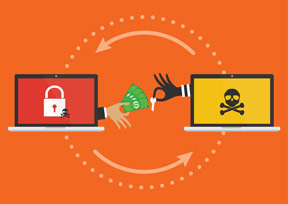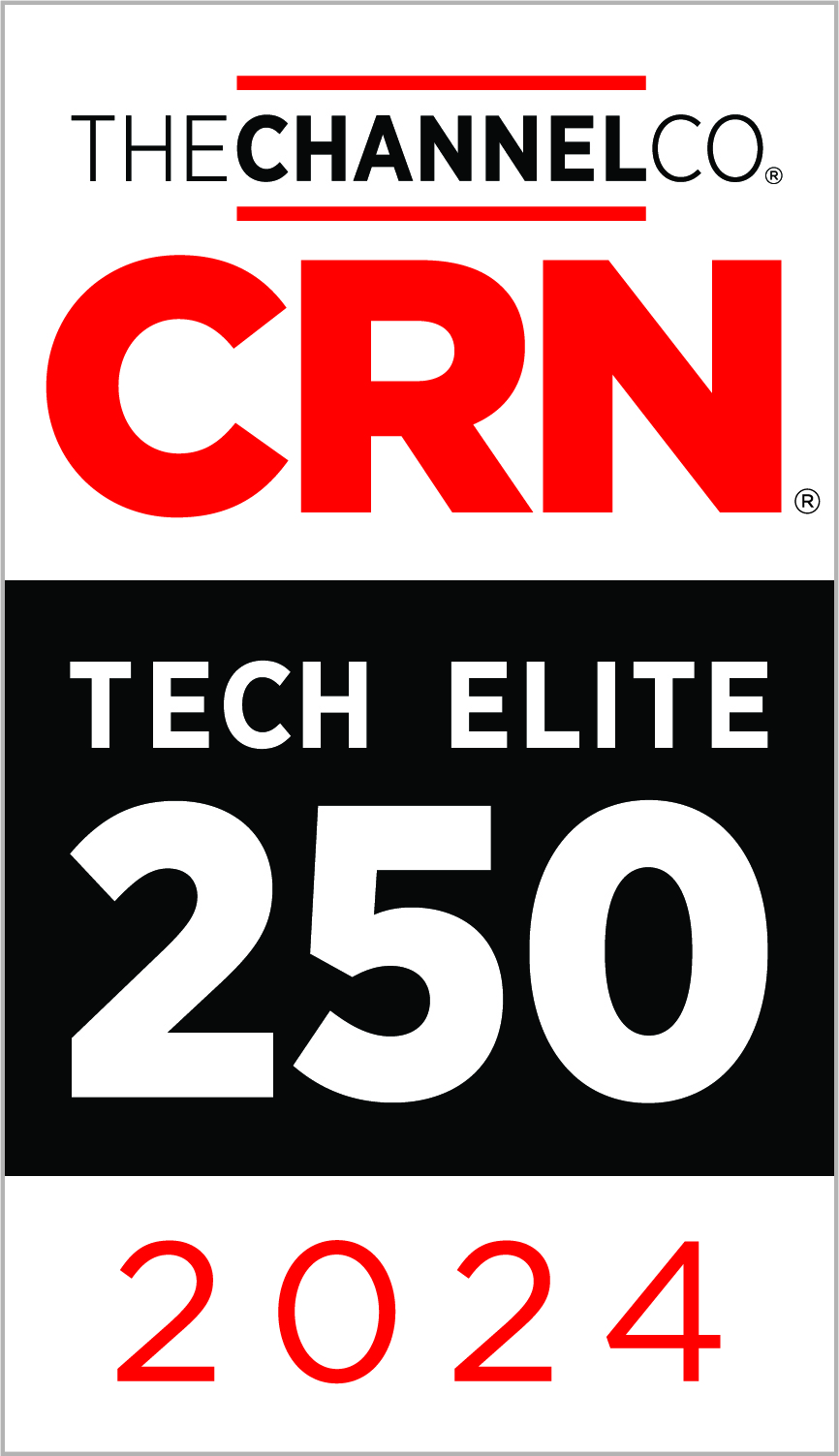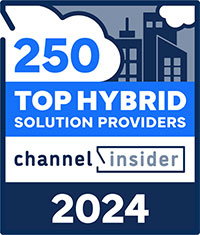Tools Over Process
Over my career, I have worked with thousands of clients, and one thing is consistent across the conversations I have.
The clients are more focused on the tools than the process.
The explosion of tools in the technology market has not helped this fact much either. Now that tools are virtualized, and we see more and more software-defined tools, the tool sprawl is in full growth mode. Need a load balancer? Load up on this virtual appliance. Need a new Firewall? Load up this IOS image. The server sprawl that we saw during the height of virtualization is probably going to be eclipsed by the tool sprawl we are about to see with software-defined infrastructures.
This tool sprawl has and will lead to tool-rich environments that are process poor. The impact of this will be massive security risks due to a lack of knowledge of tools and the increase in the total attack surface within an organization. We will also see outages with trickle down and much larger failure domains due to the lack of process maturity within some IT organizations. I can also see that just like in the past; there will be a tendency to blame the tool and capitulate from one tool/platform to another, and not address the foundational process issues within the organization.
History repeating itself
So why do we keep learning this same lesson over and over again? Mainly because gaining process maturity is hard and even more difficult is staying mature. Also, organizations typically don’t understand the value of process maturity in information technology service delivery. Usually, the time process maturity value is realized is at time of incident. These incidents could be an outage of a critical system, security event, or the competition is outmaneuvering them due to efficiencies gained through mature automated technology service delivery.
Over the last few years, I have been working with clients who want to migrate to the cloud, and my first question to them is why? The next question is what do they mean by “the cloud”? Usually, when I hear this from the client, I start trying to understand how they deliver their technology services today. I find that most have standardized or a common off-the-shelf toolset to simplify their service delivery. The providers of these applications are rapidly moving into a SaaS, delivery model. I encourage clients to migrate to these models for their applications if they are not doing custom development and the applications are not a differentiator for their business.
Right Tool for the Right Job

That brings me to the main point of this post. Use the right tool for the appropriate job. Using the correct tool in the right way is all about the process in which the tool is used. You would never use a powered screwdriver in the same way you would use a manual one or a nail gun as a regular hammer. You would lose the efficiency of the tool.
Many clients are doing this with cloud services today when they “lift and shift” applications on the cloud. Organizations gain efficiency in hyper-scale IaaS platforms like AWS and Azure by turning systems or processes off when they are not in use. This type of capacity management is a major change for most organizations. Most have been trained to “Deploy! Deploy! Deploy!” what happens to the infrastructure after deployment is not the IT departments responsibility or concern. These actions create massive amounts of sprawl, and sprawl in an IaaS cloud platform is a terrible thing. By not utilizing the tool the right way, organizations are not getting the cost efficiencies promised by cloud vendors. This tool use makes the IaaS cloud inefficient for many and leads them to the belief that cloud is not right for them. However, the tool was used the wrong way from the start.
Changing Capacity Management
So, then it is simple, right? Just change the way we do capacity management, and we should be good. I wish it were that simple. The issue is this. Evolving capacity management to align with just in time computing becomes a daunting task. As the organization tries to reduce its amount of compute inventory to realize the efficiency of cloud and deploy systems as thin as possible, the need for new process management around inventory and capacity management becomes critical.
The capacity management is also tied directly to the business need for capacity at the time the business needs it. This leads to the fact that the capacity management of IT resources needs to be directly tied to the business operations and be treated as a constraint to the organization providing its products or services, just like any other raw materials. This redefining of IT resources results in the restructuring of teams, measuring IT service delivery differently, using manufacturing efficiency principals and focusing IT service delivery on business results rather than traditional IT metrics. Therefore, migrating to the cloud is hard and requires a shift in people, process, and lastly tools to be effective. Many organizations migrate (lift and shift) the tool first and then try to fix the process under the duress of the inefficiency. These actions can and often do lead to a failed cloud implementation and a lot of tools and vendors taking the blame.
I will leave you with this final analogy. This situation is very similar to someone wanting to get into shape. One buys the gym membership, exercise equipment, new outfits, shoes and any other technology to get into shape. However, they fail to change their eating habits, he/she does not make time to workout, and sometimes he/she even hires a trainer who makes them sore. Then, the person gives up and blames all the stuff/tools they had around them instead of focusing on the root problem which is that it takes commitment and hard work consistently over time to see real results.
Email scams have been around as long as email has existed. Many use the same techniques that scammers have been using long before the internet was a common tool. In the internet age, email scams have become more deceptive and common, and even seasoned internet users have fallen victim to these scams.
Unfortunately, there is no program or anti-virus to protect us from these scams. They are social engineering attacks, or scams that rely on tricking users, rather than infecting machines with malicious code or software. The only way to protect yourself from these types of scam is to be aware of them and recognize the signs that an email is a scam. Email programs have improved immensely over the years by adding spam filters and junk folders, but no anti-spam filter is perfect. Below are a few ways to recognize email scams.
Fake Links
Among the most common email scams are phishing scams. These are emails designed to look like a product or service you use (Office 365, paypal, etc.) and they include a link for you to click on and enter login credentials. These emails can be revealed as fake by checking the email address and the URL of the link. Often, the email address will be close to something that the actual company would use (support@m1crosoft.com instead of @microsoft.com for example). Check the email closely to see if the address is spelled correctly.

Another part of the email address to check is the domain (the part of the email address after the @ symbol). Check to see that it matches the company’s website. For example, Wells Fargo would be sending emails from an @wellsfargo.com email not wellsfargobank.com as their website is wellsfargo.com. Next, check the URL by hovering over the link with your mouse cursor. Again, it should match the company’s website. Do not click on the link if it doesn’t match the company’s website. If an email seems fishy to you, don’t trust it. If you aren’t sure, send an email or make a call to the company’s support line to verify the email is real.
Advanced Fee Scams
Another common type of scam is the advanced fee scam. Everyone has heard of the Nigerian prince that will pay you millions of dollars. Their money is locked up and can’t be accessed unless you send them a small fee that they will then use to recover their millions. Usually these emails include some sob story, and try to use your emotions against you. The best thing to remember about these types of scams is that if it seems too good to be true, it probably is. This scam has been around a very long time. The best way to deal with it is to just ignore the email, delete it, and move on.
Employment Search Scams
The employment search scam comes in the form of a job offer, requesting that you fill out a job application. These job applications are designed to get as much personal information as possible in order to steal your identity. Or, they may try to get access to your bank account and steal money that way. If you are being solicited by a company that you didn’t contact first, be very wary of a scam. Do your research on the company. Does the job title match the company’s industry? Do the job postings on their website match the information in the email? If the answers to these questions are no, the chances are good that you’ve discovered a scam.
Disaster Relief/Charity Scams
In times of disaster, where people have died or lost everything, donations sites will be set up to raise funds for those in need. Unfortunately, many people take advantage of this situation by setting up fake charities or phishing sites to get you to donate to them instead of the legitimate organizations. Donation requests through email are nearly always a scam, so ignore them all. If you want to donate to a charity or relief foundation, contact them directly through their website or via phone. NEVER click on a link in an email asking for donations.
people take advantage of this situation by setting up fake charities or phishing sites to get you to donate to them instead of the legitimate organizations. Donation requests through email are nearly always a scam, so ignore them all. If you want to donate to a charity or relief foundation, contact them directly through their website or via phone. NEVER click on a link in an email asking for donations.
The best way to avoid getting scammed is to always be skeptical of anyone asking for your private information. Ask yourself some simple questions like:
Do I know these people?
Did I request this email?
If the answer to these questions is “no”, it is most likely a scam.
I am the father of two amazing kids (a girl & boy) and I am now the grandfather of a grandson & a granddaughter. Each time I hear about a school shooting, my heart goes out to the parents, grandparents, brothers, sisters, and the entire community of those injured or killed. Each time, my wife and I talk about the number of lives that are forever crushed by such a senseless act.
I also have the honor of leading an IT Organization (Zunesis, Inc.) and an exceptional group of people who make it their business to help make the lives of people better through the application of information technology. For many years, Zunesis has been providing IT solutions to K12 School Districts in the Western United States. Video surveillance is used widely within K12 schools and is a useful technology in understanding what has happened after the fact. For many school shootings, video surveillance has been used as a tool to document what happened when, where and by whom. These benefits of video surveillance are useful, but they are 100% reactive. What if we could use a combination of video and Internet of Things (IoT) technologies to attack the problem of school shootings proactively?
How Can Technology Help Prevent Tragedy?
 Rapid advancement and innovation in IoT and video analytics may provide a preventative tool to help protect our kids from further senseless shootings. In a nutshell, the idea is to use higher fidelity 4K video cameras and co-resident video analytics software to monitor school activities, entrances, and exits. Advances in IoT allow for computer intelligence to be put at the edge of the network and provide an early warning system, alarm system, or possibly a system that triggers automated functions based on what is seen (like locking a door and preventing a would-be perpetrator from entering the school).
Rapid advancement and innovation in IoT and video analytics may provide a preventative tool to help protect our kids from further senseless shootings. In a nutshell, the idea is to use higher fidelity 4K video cameras and co-resident video analytics software to monitor school activities, entrances, and exits. Advances in IoT allow for computer intelligence to be put at the edge of the network and provide an early warning system, alarm system, or possibly a system that triggers automated functions based on what is seen (like locking a door and preventing a would-be perpetrator from entering the school).
In the past, we have used video to go back and examine what has already happened. Often it is viewed in a central location by someone watching a multitude of screens while likely being asked to do other jobs as well. This new strategy moves the video and intelligence away from a central viewing area and a reactive method, to a proactive, intelligent, at-the-edge approach. Being able to recognize a person or object that doesn’t belong beforehand could provide additional protections for our kids. Ultimately, we want to keep the bad guy(s) out of our schools before they cause harm. In situations where the shooters are students of the school, the video analytics would need to be trained to recognize things that were “out of place” such as large coats (used to conceal weapons) during warm months or students entering the school at unusual times.
Facial Recognition
High-resolution 4K video cameras and video analytics software allow these IoT systems to perform facial recognition or recognize things that are out of place (like a person wearing a trench coat during a warm month of the year). Would it be possible to load up a data repository with graphical pictures of teachers, administrators, students and parents who attend and work at the school? Would it then be possible to implement specific boundaries around allowable entrances and the times those entrances could be used? The key would be to define which people are “safe” and when they are allowed access to the school. The next step would be to define what is normal and what is abnormal for the purpose of triggering alarms and notifications. Over time, machine learning and artificial intelligence could be utilized help monitoring normal behaviors and reacting to behaviors that are inconsistent.
What About Cost?
The next big question is cost? Access to money is always a challenge for our schools. The good news is that 4K video cameras, IoT edge devices, analytics software, and compute and storage solutions (at the edge) are coming down in price. And because video surveillance is being used widely within our school systems already, these new innovations could be used to upgrade the current video systems. It is likely that these new IoT video analytics solutions will be more expensive than the current reactive video surveillance solutions, their cost should not be outside the realm of possibility. Finally, because the K12 market is so large and this need so acute, the technology would surely become more affordable as competition entered the picture and parents, teachers, and politicians became part of the funding discussions.
I recognize that this may sound like a stretch to some, but finding new ways to combat this threat should be considered and IoT and video analytics provide a possible path for that to happen. I for one am encouraged by these new innovative technologies. I believe in the very near future, we will be able to use technology to proactively protect our kids.
Zunesis Earns Distinction through commitment to Academic Customers
DENVER, CO – JUNE 13, 2018
Zunesis today announced it has become a Microsoft Authorized Education Partner (AEP), demonstrating its ability to meet Microsoft academic customers’ evolving needs in today’s dynamic business environment. To earn a Microsoft AEP authorization, partners must complete a test to prove their level of academic licensing and market expertise.
The AEP program is designed to train participating resellers on Microsoft’s Academic licensing, authorize them to purchase and resell Microsoft Academic licenses, and demonstrate to potential customers that they are approved and knowledgeable academic partners.
Academic licenses, and demonstrate to potential customers that they are approved and knowledgeable academic partners.
Zunesis has over 14 years of experience helping education organizations across the West deliver IT services that enable their faculty, staff, and students.
“The Microsoft AEP authorization shows our commitment and specialization in the academic IT marketplace. It demonstrates our knowledge of Microsoft and its academic products.” said Brian Lewis, Director-Cloud Practice at Zunesis. “We hope to accelerate our academic customers’ successes by serving as technology advisors for their ongoing IT service requirements regardless of whether the service is delivered on campus or from cloud-based resources.”
By becoming AEPs, partners show themselves to be committed and trained in providing discounted Microsoft academic products to the education market,” said Anthony Salcito, vice president of Education for Microsoft Corp.’s Worldwide Public Sector. “This authorization, along with our other education partner initiatives, gives our partners recognition of their areas of expertise and our academic customers the confidence that they are buying from academic IT specialists.”
The Microsoft AEP Program is designed to authorize and equip organizations that deliver academic products and services through the Microsoft platform with the training, resources and support they need to provide their customers with superior experiences and outcomes.
About Zunesis:
Zunesis is a prominent IT solutions provider in enterprise infrastructure, cloud practice and on-premise solutions. Our home is in Colorado and we also have a significant business base in Las Vegas, Nevada. Our many years of consistent success can be attributed to the fact that we have been able to attract and retain outstanding people, while making sure that our customers are successful.
We officially have hit the half way point on the year. You may be thinking wasn’t it just January? Or, how has the year flown by already? As many businesses and individuals do each year, we set up resolutions, projects and/or goals to achieve or tackle in the coming year. Resolutions often have a negative connotation to them of being unrealistic goals that most give up on and are considered a waste of time.
Is There Light at the End of the Tunnel?
Did you know that typically only 9% of those resolutions are kept or followed through by this point in the year? As you still see a pile of projects on your desk and deadlines that have not been met, you may be thinking is there light at the end of the tunnel? Can this year still be a success when it comes to achieving your resolutions or goals?
The truth is that many resolutions are often unattainable or need to be modified over time. As you delve into a project that you started at the beginning of the year, I’m sure there were bumps along the road. Possibly other things were discovered that took your project into a completely different direction. Besides giving up on the rest of the year and the goals that you set, what can you do that won’t result in you having a nervous breakdown or having a feeling of being an epic failure?

What can you do at this halfway point?
- Sit Down and Evaluate: Review what progress that you have made in the first 6 months of the year. Are the goals you set for this year still relevant for your company? What challenges have you come upon? Take a truly objective look at the state of your current workload in the office.
- Break it Down: Write down your current goals and our projects and prioritize them all by importance and relevance. Some goals may have already been accomplished this year. Some may no longer be important in the grand scheme of things.
- Look at the Past: Ever heard the saying that history repeats itself? Sometime that can be a good thing.What did work for you and your company and/or department? Why did it work? What can you learn from it? How can you use these lessons for future endeavors?
- Celebrate the Mini Milestones: Maybe you haven’t finished your big project yet or accomplished your major goal but recognize what you have accomplished. You are more likely to achieve the larger milestones if you recognize these smaller milestones along the way. Also, you can usually get more productivity from your staff when they feel encouraged and appreciated. Negativity is usually not the answer when trying to move a project along in your company.
- Training: Is your staff well trained? Can you trust them to take on a project from start to finish? Review your team and see what inefficiencies may be prevalent that can impact your department/company succeeding for the rest of the year.
- Get Laser Focused: What are your top priorities for the remaining six months of the year? Delegate the appropriate items to your staff and set markers for accomplishments that you want to finish. Put your needs before your wants and prioritize your valuable resources so that you are not wasting valuable time.
- Future Meetings: Are you finding not much is being accomplished at your business meetings? Know what you want from future meetings and what needs to be achieved in them. Make sure they are a valuable use of time and think about if the meeting is necessary for your project to succeed.
- Quality Assurance: As you may have noticed bumps in the road in the first half of the year, have you set up checks on your team’s work? Are you looking for bugs and having others critique each other’s look? Setting up a process to review items along the way may save valuable time and money.
- Act to Solve Problems Rather than React to them: Instead of reacting to situations, take a moment to think about what can I do to solve this situation?
- Ask for Help: Swallow your pride and ask for help when needed. There may be a way to resolve a situation that you may never thought of or knew could work. Research to see if what you are proposing is the best way to go. Projects take detours all the time and sometimes the road less traveled may lead to success. Be open to new ideas and ways to do things.
- New Projects: You may have decided that there is a new project that needs to be tackled in the next six months. Make sure you clarify the who, what, where, when, how much, etc before you jump into this next project. The devil truly is in the details.
We all ultimately have the same goal at the end of a year, that we can look back and say “Look what I accomplished!” Take the time to reflect on what has changed, progressed or saved time and money. The key to reaching your goals this year may just be in taking baby steps along the way and taking the time to evaluate what is working and what is not. Be realistic on what can be achieved and ask for help along the way when needed. Realize that no person, department or company is perfect.




